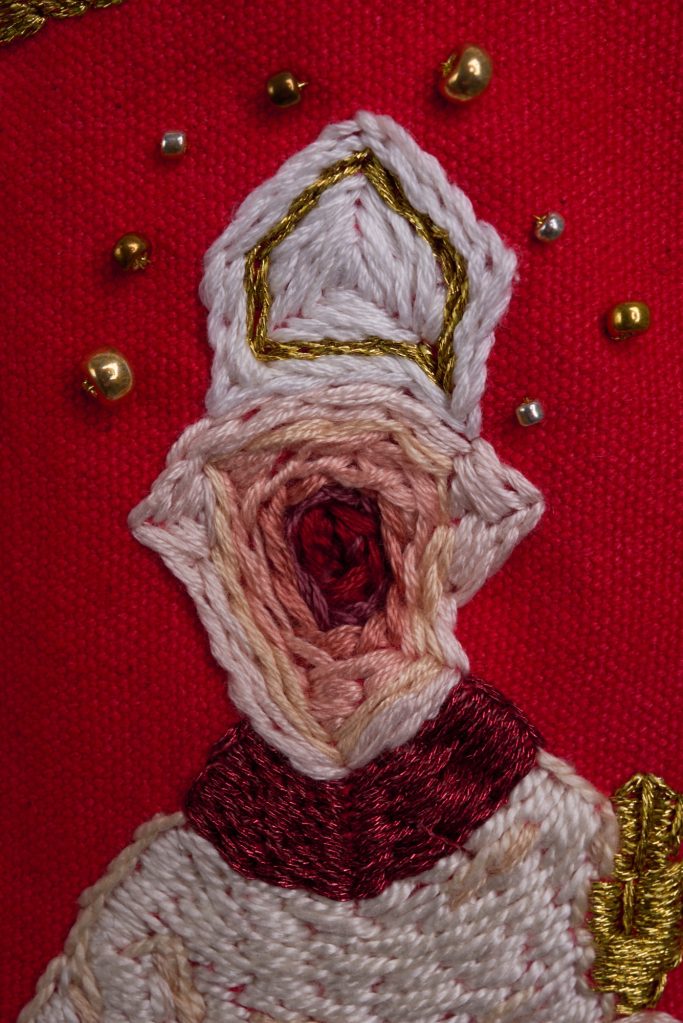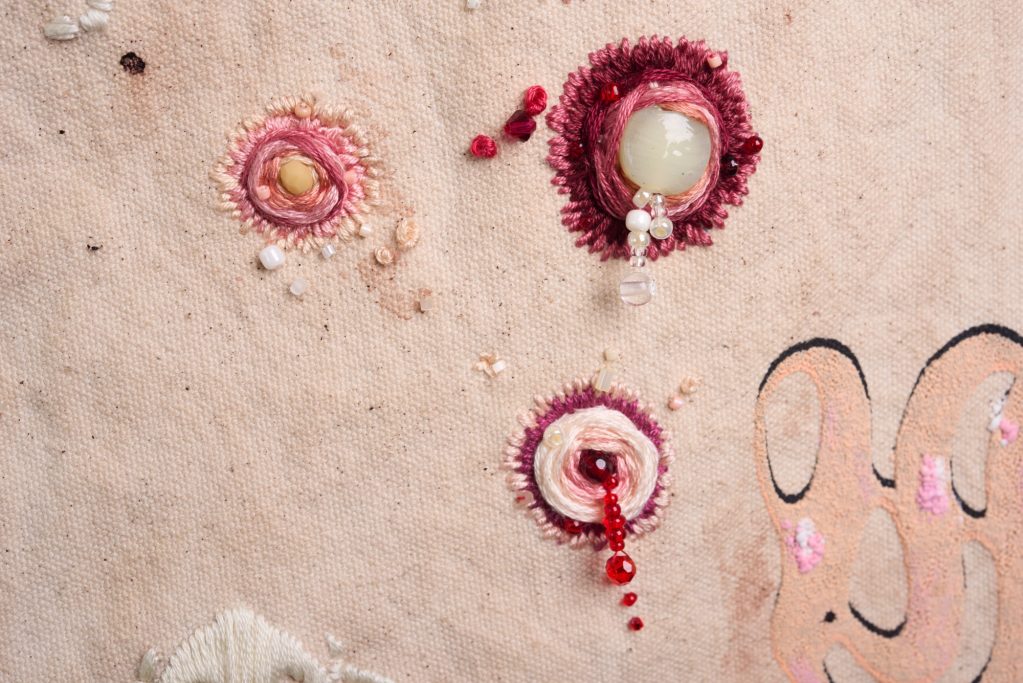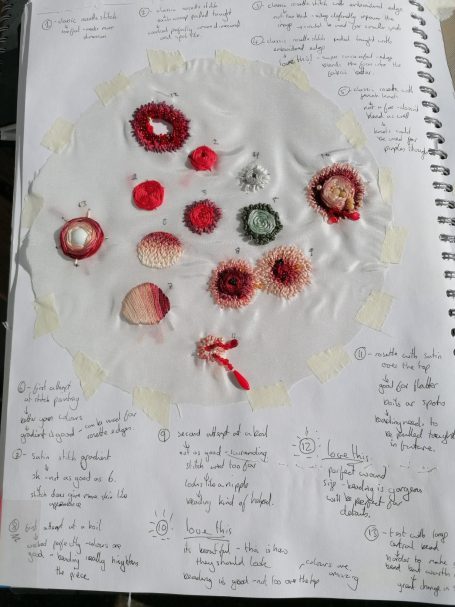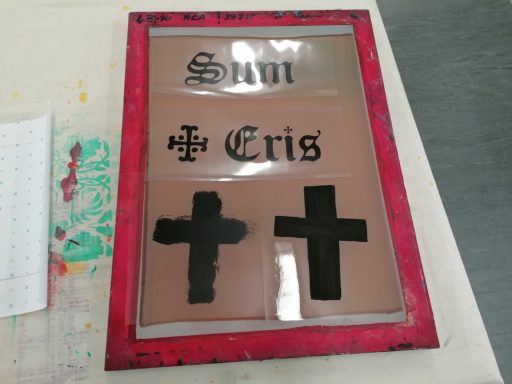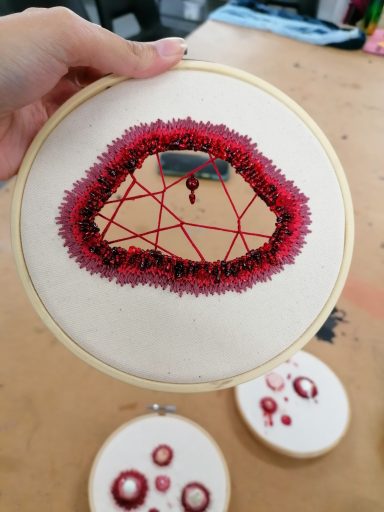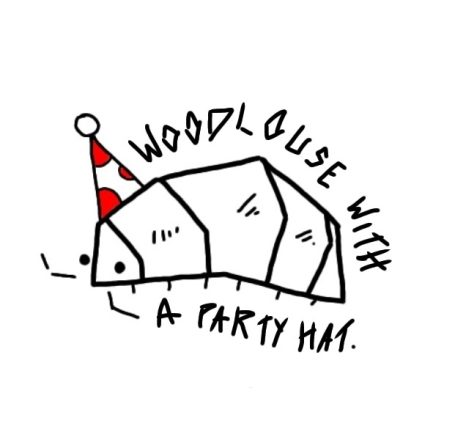I was what you are, you will be what I am
This project was an exhibition piece made for Hereford Cathedral in the second year of my BA (Hons) degree at Hereford college of Arts [2024].
Materials - Cotton canvas, glass beads, embroidery thread, screen print, pigs blood.
Estimated production time - 92 hours
About this project.
This project explores a commentary on loss of identity within Hereford Cathedral. Using hand embroidery and embellishment on thick canvas, I recreated a holy Stole worn by priests. Natural and commercial dyes were used to achieve the stark colour difference. The development came from my fascination with the disparity between the defaced saint statues and the unidentified plague victims in the pit beneath the cathedral. I was struck by how unfair it was to have those within the cathedral remembered and those beneath it lost. My goal was to restore the identity of the plague victims through informing people of their history and experiences; making their memory equal to that of the saints.
Process
Here's some details about the production of this project to help you follow my train of thought over the 4 months of its production.
Click to see full images and notes.
The project started with research at the Cathedral, finding inspiration within the building. I used this time to sketch all of the faceless statues I could find. Once I'd researched further into my background for this design I started sampling basic ideas, testing texture and form in embroidery. After hours of sampling, drawing and placement testing I finally decided upon a layout for the Stole.
Sampling and testing consisted of a lot of set up for my screens and testing colour, layers, details and placement. Getting this text right was really important as it was the centre design across the whole piece.
For the client meeting I made a set of 3 samples exploring the developed textures I would be using on the piece. Alongside this I was testing the larger illustration aspects in embroidery, making sure they converted well and testing the production time.
The final stages were dyeing the fabric, ironing, printing and embroidering the panels separately. Once completed they were connected together back to front, to be flipped inside out and pressed. The final wound details were then added. The production of the piece as a whole was around 92 hours. The project spanned around 4 months, all of which consisted of research and testing for the creation of this final object.
We need your consent to load the translations
We use a third-party service to translate the website content that may collect data about your activity. Please review the details in the privacy policy and accept the service to view the translations.

